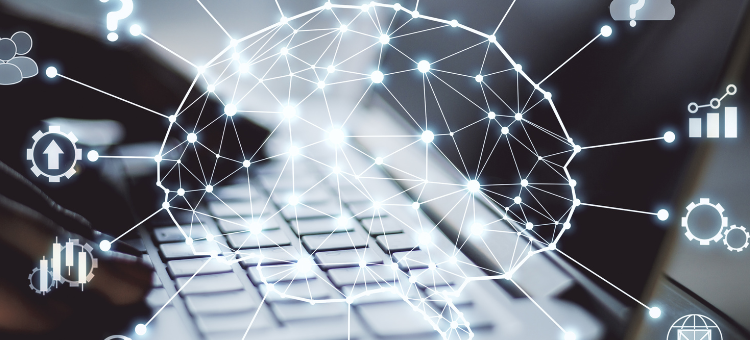Key Takeaways
- Understanding the role of AI in detecting academic paper authenticity.
- Exploring the benefits and challenges associated with AI-based detection tools.
- Highlighting key strategies for researchers to maintain integrity in their work.
The Increasing Importance of Authenticity in Academic Research
In academia, the credibility of research papers is of utmost importance. Ensuring that findings are original and accurately represented can significantly impact the academic community and the broader public.
With the rise of AI, tools like the AI detector are playing a crucial role in maintaining this integrity. These tools help swiftly identify data fabrication and instances of trust in academic publications.
Universities and research institutions worldwide are adopting these technologies to safeguard the integrity of their scholarly outputs, which is essential not just for reputation but also for advancing genuine scientific inquiry.
How AI Detection Tools Work?
AI detection tools utilize advanced algorithms to analyze the text in academic papers, highlighting potential instances of plagiarism or data fabrication. These tools scan large existing research databases, ensuring that the content in new submissions is original and reliable.
For example, these tools often employ natural language processing (NLP) to evaluate sentence structure and detect unusual phrases that may indicate copy-pasting from other sources. According to ResearchGate, these tools can drastically reduce the prevalence of fraudulent research in the academic world.
This robust mechanism underpins the reliability of scholarly work, making it easier for reviewers and editors to verify the originality of a manuscript in a matter of minutes.
Benefits of Using AI-Based Detection Software
- Accuracy: AI tools provide unparalleled precision when identifying inconsistencies or similarities in academic papers. These systems can compare text against billions of documents in various languages, ensuring comprehensive scrutiny.
- Efficiency: Unlike manual reviews, AI tools can analyze large volumes of text in a fraction of the time, speeding up the review process. That makes it possible to review multiple papers simultaneously, allowing faster turnaround times for publication and reducing bottlenecks in the submission pipeline.
- Consistency: AI ensures a standardized approach to plagiarism detection, minimizing human error and bias. While human reviewers may vary in their meticulousness and subjectivity, AI can apply the same rigorous standards across every document it analyzes. This uniformity ensures fair treatment of all submissions and upholds high standards.
Challenges Faced by AI Detection Tools
While AI tools offer numerous advantages, they are not without their challenges. The possibility of false positives, in which acceptable citations or widely used words may be mistakenly reported as plagiarism, is one of the main problems.
It can lead to unnecessary concerns for authors and additional reviewer verification steps. Furthermore, sophisticated methods of deception, such as paraphrasing or language translations, may sometimes evade detection.
For example, a savvy researcher might significantly alter the structure of borrowed text to avoid detection, which can create loopholes in the AI’s checks. Improving these tools is essential to address such limitations effectively and continuously.
Therefore, continuous updates and integration of more sophisticated linguistic algorithms are necessary to keep up with the evolving tactics employed by those aiming to circumvent the system.
Case Studies: The Impact of AI Detection on Research Integrity
Several academic institutions have seen remarkable improvements in research integrity thanks to AI. For instance, a study by the Journal of Informetrics highlighted how AI detection reduced plagiarism cases by over 70%.
This significant reduction underscores the effectiveness of AI in tackling academic dishonesty. Furthermore, these tools have also been vital in identifying fabricated data in scientific studies, ensuring that published research remains trustworthy.
Specific case studies have shown instances where entire research outputs had to be retracted after AI tools revealed falsified data, which manual reviews might have missed. It has saved valuable time and resources and upheld the ethical standards of scientific research.
Best Practices for Researchers
To maintain the highest standards of authenticity, researchers should follow best practices such as:
- Proper Citation: Always credit sources and avoid recycling text from previous works without appropriate attribution. This includes direct quotations, ideas, and methodologies borrowed from other research. Proper citation practices prevent plagiarism and give credit where it’s due.
- Use Detection Tools: Utilize AI-based tools to scan drafts before submission, ensuring originality. By using these tools beforehand, you may spot problems with your drafts and fix them before the peer review process notices them.
- Stay Updated: Regularly update knowledge on the latest ethics guidelines and plagiarism detection methods. Since academic research is continually evolving, maintaining the integrity of the study requires staying current with best practices and the most recent technological advancements.
The Future of AI in Ensuring Academic Integrity
AI will play a more significant part in upholding academic integrity as it develops. The capabilities of detection tools will be further enhanced by advancements in machine learning and natural language processing, making them more thorough and dependable.
The ongoing collaboration between AI developers and academia will be essential in addressing emerging challenges in research authenticity. Future developments may include real-time detection tools integrated into writing software, offering researchers immediate feedback on the originality of their work.
These advancements will improve the review process’s efficiency and support researchers in producing high-quality, credible research from the outset.
Conclusion
AI detection tools are revolutionizing how we ensure academic papers’ authenticity. By leveraging these technologies, researchers and institutions can uphold the integrity of their work, fostering a more reliable and trustworthy academic ecosystem.
As these tools continue to evolve, their importance in safeguarding the credibility of educational research cannot be overstated. Integrating AI into the peer review and publication processes is a testament to the ever-increasing need for credible, reliable academic research in today’s information-rich world.

